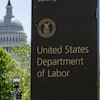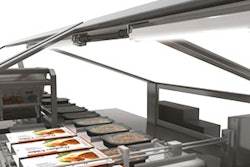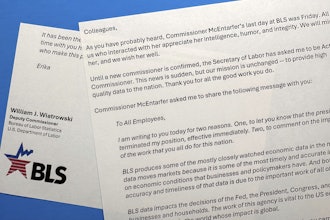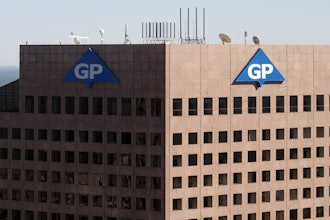Perhaps, Lee Wylie explains the history and state of ERP most succinctly.
Wylie, who is the chairman of the Rootstock ERP Executive Council, states, "First, there was MRP, followed by MRP II and, then, CIM. Ultimately, as director of CIM at Gartner Group in 1990, I created the concept of ERP to describe the evolution of MRP into next generation business systems. ERP software was intended to become a larger whole that reflected the evolution of application integration beyond manufacturing. However, it didn't stay that way.
"Today, not all ERP systems are developed from a manufacturing core, especially those residing in the Cloud," Wylie adds."Some vendors begin with accounting software while others start out in maintenance or human resources. The problem for the manufacturer is that many imply that they will work in manufacturing or any other sector. They won't.
"In the rush to get to the Cloud," Wylie explains,"these manufacturing-light ERPs are either severely limited in functionality or they are only replications of a predecessor legacy ERP package supporting one business type. They do not acknowledge that manufacturers of today require a greater variety of manufacturing methods and services to be supported. Also, for those that offer the ‘hosted’ model, they will rapidly be perceived by a now more informed buyer as Cloud mutants who have learned that the collaboration required amongst a variety of Cloud software packages just can’t be achieved in their private ‘hosted’ Cloud."
This was brought home to me as I followed a Rootstock salesperson into another company's booth at the recent Dreamforce show. At that booth, a young marketing executive was explaining to the Rootstock salesperson how much he and his company were looking forward to teaming up with Rootstock because their package didn't include ‘inventory.’ Over the two men conversing was a banner that read ‘State of the Art ERP.’"
I have always thought the key letter in ERP to be the "E" for enterprise. As originally used by Wylie, it means company-wide or "across the enterprise," as opposed to local applications used by isolated functional areas. Today, the term ERP is sometimes applied to just about any business application, even to those used in just one department.
Since Wylie first coined the term ERP, companies implementing it have had to choose between one of two general approaches:
1. Rely on one chosen ERP package for most application functionality — This is ERP sellers’ preferred approach: add as many applications as possible to the package and try to sell them as a unit. This approach has attractive theoretical advantages for the customer. All major applications come from a single source (“one throat to choke” in the vernacular). All major applications are, at least in theory, interoperable. Every application is at least theoretically aware of other applications’ data. Best of all, everyone has only a single user interface to learn.
For vendors — both software vendors and implementation vendors — the advantages of pushing this approach are almost too obvious to state. All results are huge - big software suite, big money, big implementation process ... big, big, big. But down the road, it becomes impossible to replace one application without replacing everything. And, replacing everything at once is a hugely painful and expensive process.
2. Best of Breed/Power of Choice — In this ERP mode, the customer interfaces best in breed smaller packages to help run the business. There are two significant upsides to this approach. First, it is not necessary to settle for some less-than-optimal applications in order to get the best-fitting software available for other applications. Second, the combined system can be changed incrementally. For instance, replacing the inventory modules does not require that the financial applications also be replaced.
The chief downside of this approach is that it requires interfaces between applications — and interfaces are often "the devil’s tools." Complexity migrates from the applications themselves to the hidden connections between applications. By “complexity,” I mean the whole bundle of problems that have to be solved if the enterprise system as a whole is to work. No job is easier to underestimate than the job of interfacing two seriously deep applications, no matter how robust and proven those applications themselves may be.
Today, a Third Way — Hosted Cloud ERP
The first thing that must be understood about Hosted Cloud ERP is that it really is new and that it really is a game-changer. It’s not off-premises storage itself that has caused this change; it is the potential of hosting multiple applications — some huge, some tiny — on a single, inter-operative platform having a single user interface.
Without question, Salesforce has been the most successful catalyst for this game-changing approach. When all packages are created for the Cloud within the Salesforce ecosystem, one Salesforce written app can easily talk to another Salesforce written app. Using the same interfaces makes the entire enterprise system interoperable. Not only does the solution become enterprise wide but the customer has a power of choice regarding packages. Nonetheless, though, many of the Salesforce ERP packages are manufacturing light and buyers must become very conscious of whether or not their new Salesforce written ERP is, in fact, a Manufacturing Cloud ERP, providing all of the elements needed to be defined as such.
The Public Cloud Ecosystem Solves Many Problems for ERP Buyers
The benefits of moving to the cloud are well-known to manufacturing firms:
- On-demand real-time access – The days of manually retrieving relevant information about a customer or inquiry are over – firms can now access the information from any Internet connection. On-demand real-time access to important resources means that every department in the supply chain can react instantly to the changing needs of the business. Manufacturing firms can fill orders faster, quickly respond to changing customer habits and manage inventory more efficiently.
- Big data - The cloud lets firms store, manage and access large amounts of important data. Cloud ERP for manufacturing gives firms the ability to access big data, including plans, simulations, documents and other manufacturing resources from the cloud.
- Reduced Costs - Cloud-based manufacturing solutions have been found to reduce infrastructure, maintenance and lifecycle costs by as much 54 percent according to industry analysts. Cloud solutions save both money and time by increasing real-time collaboration and reducing the time it takes to bring products to market.
- Scalability - Cloud ERP solutions deliver only as much storage and power as needed, allowing manufacturing companies of all sizes to determine when they need more or less power based on changing project workloads.
Already, in today's manufacturing world, the best selling ERP Cloud solution is the hosted Cloud ERP. In a recent study completed by Gartner (Survey Analysis: Adoption of Cloud ERP, 2013 Through 2023), CIOs and application leaders were advised to consider Cloud ERP as a replacement for old ERP systems that are either no longer supported or are still running on old platforms such as mainframe computers. A total of 47 percent of participants in the survey (companies from North America, EMEA, APAC and Latin America that range in size from $10M to $10B) said that they planned to move their core ERP systems to the Cloud within five years.
The public, hosted Cloud companies have been the drivers. These providers invest in software and infrastructure which makes it easy for independent software companies to develop a contemporary product. Public Cloud providers are competing for these software companies — and their customers — to be long term renters of their platform. It, therefore, behooves the platform provider to provide an ecosystem which can offer additional benefits to the software company’s business.
For those business application software providers that would like to live within a ‘best of breed’ ecosystem and easily integrate to other business applications, the force.com platform of Salesforce today has the advantage over other public Clouds. On Force.com, using advanced integration development technologies provided by Salesforce, a number of software developers have developed their applications so that they can easily integrate with other applications on the platform — not to mention their integration to the Salesforce applications of CRM and Service Cloud.
In addition, public cloud platforms, such as Salesforce’s Force.com, offer significant advantages for IT departments to easily provide their own customizations to ERP Cloud software written natively on the public cloud platform. Recognizing that there is a significant difference, and benefit, to the open systems on a public Cloud, IT management can make informed decisions on which Cloud ERP solution will provide a quicker payback and higher return on investment, especially when considering that those latent customization projects can be controlled by the customer rather than the software provider.
However, with this all in mind, a Manufacturing Cloud ERP needs the software application modules that define them. Manufacturing light ERP simply cannot provide the help manufacturers need from their ERP, no matter the format in which they are delivered.
If It Doesn't Have ______, It's Not Manufacturing Cloud ERP
Let's return to that booth at Dreamforce, the one that advertises being a state-of-the-art ERP, the one that doesn't have an inventory module. Without Inventory, how can an ERP be called an ERP? It's like saying a car without wheels is a car.
Just think about it. Inventory Control supports a number of manufacturing and distribution business processes relating to the maintenance of item inventories, inventory valuation and planning and setting of item policies such as lead time and MRP or RP planning. Purchase Requisition Maintenance for Direct Material Items is also supported by Inventory Control as is Supply Demand Review (an output of MRP or RP), which illustrates the supply and demand picture with projected on hand balances helpful to the material planner for managing the inventory.
If it doesn't have MRP, it's not Manufacturing Cloud ERP. MRP is to ERP as monkeys are to humans. That's where it all started. Facts are, Material Requirements Planning (MRP) is the software engine that will use sales order and forecast demands in conjunction with the effective production bill of material and, by reviewing item inventory balances, will generate planned supplies in a time-phased manner to offset the outstanding demands for end items and sub assemblies.Specifically, MRP generates what are termed planned work orders for manufactured items and planned purchase requisitions for purchase or subcontract items. For firmed (or greater supplies) it generates reschedule or excess messages when, and if, appropriate.
Eva Wright, Pacer Group’s internal IT administrator, who is also a certified Salesforce Administrator, notes, "MRP keeps track of what we need. It lets us quickly find out everything on order and determining what we have." Isn't that one of the main reasons that manufacturers want an ERP?
If it doesn't have Shop Floor Control, it's not Manufacturing Cloud ERP. Shop Floor Control manages the life cycle of the work order and the routing that is used as a basis for defining the steps or processes that are required in the assembly and/or manufacture of the item on the shop floor. Shop Floor module capabilities should include Routing Maintenance, Work Order Add and BOM Explosion, Work Order Firming, Work Order Release and Operation Extract, Work Order Pick, Work Order Operation Time Booking, Work Order Operation Quantity Recordings, Work Order Receipt and Backflush, Work Order Cost, Rework Work Orders and Refurbishment Work Orders. And each of these capabilities rely on other application modules typically found only in authentic ERP suites.
If it doesn't have Scheduling and Capacity Planning, it's not Manufacturing Cloud ERP. The key component to repeat business, manufacturers will tell, it the practice of delivering orders on time. While MRP tells you what you have and what you be getting, this module tells you how to do it. The Scheduler develops a schedule for all firmed, release and ‘in process’ work orders based on the due date, standard times extended by the work order quantity, priority (as derived from compressed float), move and queue times as well as the work center’s standard for the hours in a production day.
Meanwhile, Capacity Requirements Planning lets you view a work center’s available capacity on a day by day basis (in terms of labor hours or machine hours). Your schedule is adjusted automatically when the ‘work order’ is moved from one day to another. Without this ERP module, you can't meet schedules consistently. You have to rely on luck which, sooner or later, will run into Murphy's Law.
If it doesn't have Lot Serial Control, it's not Manufacturing Cloud ERP. When looking at ERP solutions, there are several things a manufacturer can look for when reviewing the various ERP suites. One is to determine if the ERP provides Lot Serial Control. If you are in a business, such as medical supplies, meat packing, packaged food distribution, beverage distribution, chemical supplies, automotive, aviation, pharmaceuticals and others, where the law requires you to maintain accurate records for each unique Lot and/or Serial Number purchase and sale,you already know you need Lot Serial Control.
There are, however, many examples of manufacturers that are not mandated by regulation to implement lot serial control but realize it gives them a superior ability to manage their business. Perhaps they need to track parts that expire, to assure that they are not used in manufacturing your product. A brand new piece of machinery built using dated belts does not make customers happy when a broken belt shuts down production only weeks after purchasing.
If it doesn't have Purchase Order Management, it's not Manufacturing Cloud ERP. Obtaining critical, centralized control over direct material, indirect material and service tracking as well as vendor performance is only the beginning. Now, buyers can make decisions on purchase order quantities and due dates supported by price and delivery history for approved vendors. Why stop there? Doesn't it then make sense to consolidate inventory and non-inventory purchased items and services onto a single purchase order? Shouldn't purchase requisitions be converted to new purchase orders or placed as line items on existing orders? Why can't additional items be added to open orders, providing purchasing flexibility and efficiency? Think about it. Aren't comprehensive purchase revision control management capabilities needed as much as Purchase Order approvals?
The same thinking needs to occur in Receiving. Manufacturers need material receiving capabilities that include complete order access/review, receiving history for each item - including quantity ordered - outstanding and due. Likewise, they need to be automatically warned if a transaction will cause an over receipt or if the material arrives early. What about parts that are to be received to an inspection or other inventory locations? Aren't they important?
Bottom line ... when reviewing the ERP one's firm is going to use, don't skip over the Purchase Order Management. Yes, most ERP systems do purchasing order management. No, they are not all the same.
The Difference between Typical Cloud ERP and Manufacturing Cloud ERP is Major
We could go on and on. However, we think the point has been made. There can be a very big difference between typical cloud ERP and manufacturing cloud ERP. When shopping for manufacturing cloud ERP, remember the old adage, caveat emptor.
Jon Fred is an Application Architect with Rootstock.






















